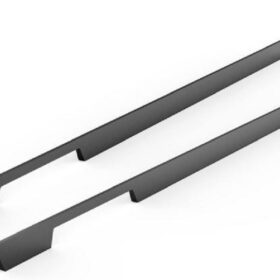How to Install Aluminium Profiles in Your Kitchen
Aluminium profiles offer a modern and versatile addition to any kitchen design, providing both style and functionality. Whether you’re looking to create sleek cabinet handles, stylish lighting fixtures, or decorative accents, aluminium profiles offer numerous possibilities to enhance your kitchen space. Installing them is a straightforward process that can be completed with basic tools and by following these step-by-step instructions.
Choosing the Right Profiles
The first step in installing aluminium profiles is to select the appropriate type and size for your application. Consider the desired look, functionality, and available mounting space. Choose profiles that are compatible with the materials and surfaces you intend to install them on.
Preparing the Mounting Surface
Before installing the profiles, prepare the mounting surface by cleaning it thoroughly to remove any dust, dirt, or grease. Use a level to ensure the surface is flat and even, as this will directly impact the alignment and stability of the profiles.
Cutting and Measuring the Profiles
Measure and cut the aluminium profiles to the desired lengths using a miter saw or a circular saw equipped with a fine-toothed blade. Ensure precision by using a measuring tape and marking the cutting points accurately.
Applying Adhesive
Apply a thin layer of high-strength construction adhesive to the back of the aluminium profiles. Use a caulk gun to evenly distribute the adhesive and avoid creating air bubbles. Firmly press the profiles into place on the prepared mounting surface and hold them for several minutes to allow the adhesive to bond.
Using Mechanical Fasteners
In addition to adhesive, you can use mechanical fasteners such as screws or rivets to secure the profiles. Pre-drill pilot holes through the profiles and mounting surface to prevent damage. Insert the fasteners and tighten them securely, taking care not to overtighten and damage the profiles.
Joining Profiles
To connect multiple profiles together, use specially designed connectors or brackets. These connectors typically feature interlocking mechanisms or screws that allow profiles to be joined at different angles and configurations. Ensure the connectors are compatible with the profile dimensions and provide secure and durable joints.
Finishing Touches
Once the aluminium profiles are installed, you can apply a protective coating such as paint or lacquer to match your kitchen decor. This will enhance the appearance and durability of the profiles, making them resistant to wear and tear.
Conclusion
Installing aluminium profiles in your kitchen is a rewarding project that can transform the look and feel of your cooking space. By following these detailed instructions, you can achieve professional-looking results that will enhance both the functionality and style of your kitchen.
-
2024-09-14Exploring the Different Types of Modern Closet Door Pulls and Their Applications
-
2024-09-14How Cabinet Door Pull Handles Support High-Traffic Areas
-
2024-09-06Cost-Benefit Analysis of Investing in High-Quality Long Wardrobe Door Handles
-
2024-09-04How Flat Cabinet Handles Enhance Modern Interior Design
-
2024-11-29Top Trends in Modern Kitchen Cabinet Pulls for 2024
-
2024-11-28The Ultimate Guide to Modern Kitchen Cabinet Pulls- Materials, Styles, and Tips
-
2024-11-27Elevate Your Kitchen Design with These Must-Have Modern Cabinet Pulls
-
2024-11-26Sleek and Stylish- The Best Modern Kitchen Cabinet Pulls for a Contemporary Look






